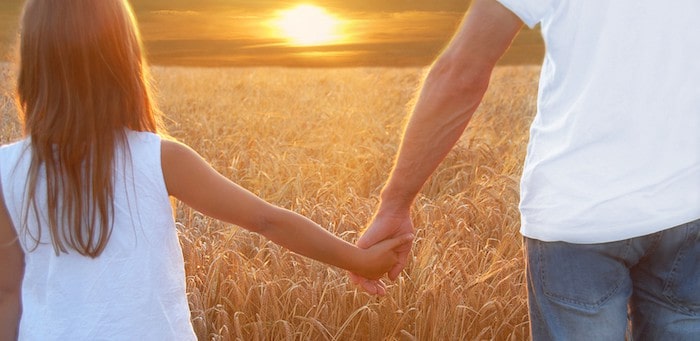
September is National Suicide Awareness Month, and you might notice social media posts about prevention with links to the National Suicide Hotline. At The WARM Place we have almost 100 people currently in our program who are grieving the suicide death of a loved one. That’s a significant number and, sadly, we see the number continuing to grow. I’d like to approach this month from a different angle, and speak about those left behind after a suicide does occur. Long before I was Program Director at The WARM Place, I was just a grieving daughter.
When I was a teenager, my father killed himself. The moment my mother told me, as she held me tightly in her arms, I felt my identity & my life change forever. Until then, I didn’t know those things could change in an instant. I remember feeling deep pain, fear, and regret. The fact that my mother was the one who told me, made me feel safe on the worst day of my life.
Later that day, as we sat at home surrounded by family friends, I watched her make numerous calls to family members to tell them the news. Watching my mom break down with each phone call was the second time I felt deep pain. But I also felt powerless. I couldn’t help my Dad. Would I be able to help my Mom? When you’re a teenager, you think you know everything, and you act like it too; but grief is a wilderness with no road map, and even family members grieve differently from each other.
In the weeks that followed his death, I remember going to school and trying to convince people I was okay. I didn’t want anyone to think I was different. But inside I had fallen apart and I did not have any skills to put myself back together again. What came next was a depth of loneliness and shame I never expected. You see, when your loved one ends their life, it feels like everyone blames you: the survivor. People said things like, “this was your fault, what did you do, what did you say, did you know he was planning this”. I was told to go to confession because he killed himself. People I trusted told others not to be friends with me anymore. Sadly, even within grief circles, suicide is treated differently. Other grieving daughters have said, “my dad loved me, he would never do that to me.” Survivors of suicide are already blaming themselves, meticulously going over every moment of history, searching for a clue that they could have acted on to prevent the death they did not want to happen.
Four years after my father’s death, I began my undergraduate internship at The WARM Place, and I remember the day we discussed suicide in training. I remember when Peggy Bohme, co-founder of the The WARM Place, said in that kind and comforting way of hers: we don’t say someone committed suicide. What else do people commit? Murder. Adultery. Why do we place that shame on survivors of suicide? Instead, we say someone ‘completed suicide’. Or we say they ‘died of suicide’. We want survivors of suicide to know we will treat them with the same kindness and compassion we treat every other kind of death loss.
Peggy’s words gave me a piece of freedom I had not yet experienced. Freedom from a shame I did not deserve, and freedom from wondering what I could have done to save my dad’s life. And it began with something as simple as semantics.
Words can cause pain and convey judgement or they can help heal. My friend of nearly 30 years whose father died of cancer once told me: “I hope our Dads are having tea and exchanging stories about their daughters.” Her simple words were profound because she was also communicating to me “we’re the same, we are not different”. That is the magical thing that happens at The WARM Place in our support groups. Grieving hearts connect with one another for the saddest reasons. They find a commonality in their pain and a feeling of hope knowing they do not grieve alone. Yes, suicide is a different type of loss. But there is one important similarity to all death losses. Survivors of suicide did not choose for their loved ones to die. And that grief—not wanting your loved one to die—is the same.
It’s true and important that we must do everything we can to help people who are contemplating suicide. But if it happens, our work is not done. We must then give that same time and compassion to the loved ones left behind. You can do that by volunteering at The WARM Place or by simply offering kind words to a friend. The older I get, one thing remains the same: I am a grieving daughter who wishes she could re-write her father’s story. What grieving daughter does not feel the same?
All my best,
Lisa Nichols, M.A., LPC-S



